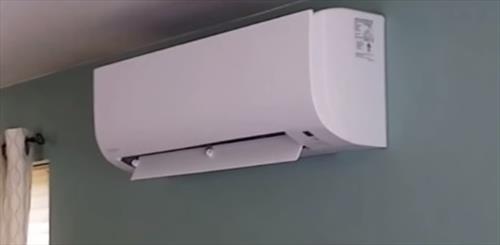
Mini split units are very good heating and cooling units that are known for their efficiency and DIY installs.
While most units are more efficient compared to big traditional home HVAC systems some units are more efficient than others.
What Makes a Mini Split Energy Efficient?
Several factors make a mini split energy efficient, including being ductless and, more importantly, the inverter-driven compressor.
Mini split units are ductless with standard home HVAC duct systems losing on average 25 percent or more of the conditioned air.
Removing ductwork that has been traditionally used to blow air into a home makes a more efficient system.
Mini split units also have inverter-driven compressors that speed up and slow down depending on the demand.
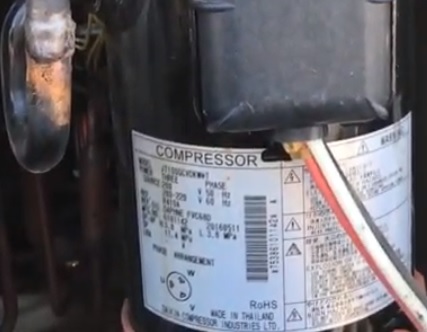
This means they don’t shut off completely as traditional HVAC compressors do.
The biggest demand for energy with an HVAC unit is during startup. Traditional compressors will draw a large amount of power during the start and then level off after running a few minutes.
Most big home units turn off and back on constantly in a cycle that uses a lot of energy.
Mini split units with inverter-driven compressors can save a lot of energy without heavy up and down spikes.
For these reasons, along with better technologies mini split units are very efficient to run.
How To Read the Energy Efficiency of a Mini Split
All HVAC systems have a SEER rating (Seasonal energy efficiency ratio) that shows how efficient they are.
The higher the SEER rating, the more energy efficient a unit is.
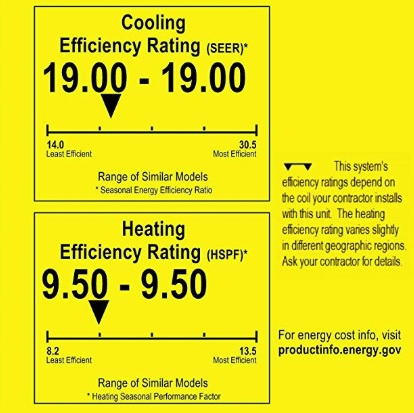
A SEER rating is based on the output a system has, over a heating or cooling season, divided by the total electric energy input.
Other standards include EER and COP, which are not used as much as the SEER rating.
EER or COP is used with HVAC systems but not displayed on mini split units as much as the SEER rating.
Find the SEER rating number when looking for the most efficient mini split system. The higher the number, the more efficient the system is.
Many traditional HVAC systems have a 10-16 SEER rating, with 14-16 SEER often installed on many new homes.
Mini split systems commonly range from 17-38 SEER depending on the unit.
There are many good units with those below the most energy-efficient we have found.
As always, be sure to read the reviews on Amazon, here, or elsewhere to be sure a unit is a good fit for you.
Be sure to read the listings below for any changes in SEER rating and what is included in any kit.
*This site contains affiliate paid links for which a commission earned.
Our Picks for Best Energy Efficient Highest Seer Mini Split
- Cooper Hunter Hyper Heat 25 Seer
- Mitsubishi Hyper Heat 24 Seer
- Pioneer WYS Series 22 Seer
- Gree 9,000 BTU 38 SEER
- Fujitsu 9,000 BTU 33 SEER
- Daikin LV Series Mini Split 24.5 SEER
Available Here on eBay
The Cooper & Hunter Hyper Heat mini split unit is rated at 25 Seer.
This makes it a very good unit with a high-efficiency rating.
It also is built to work in very cold climates with a rated low operating temperature of 22 degrees Fahrenheit -30 Celsius.
The Hyper Heat has different sizes ranging from 9,000 BTU to 24,000 BTU.
The kits sold that come with everything needed for an installation except electrical, be sure to check the listing for what is included.
Mitsubishi is a well-known manufacturer of quality mini split systems with good warranties.
They are built to last many years and make some of the most energy efficient units available.
The downside is they cost more, but the price can be worth it for those who want a very reliable mini split that also uses less energy.
There are many different Mitsubishi model sizes and SEER ratings, so be sure to check the listing for the SEER rating.
Pioneer has many DIY mini split options, including the new WYS Series.
22 Seer is a good rating and higher than the Pioneer units of 2-3 years ago.
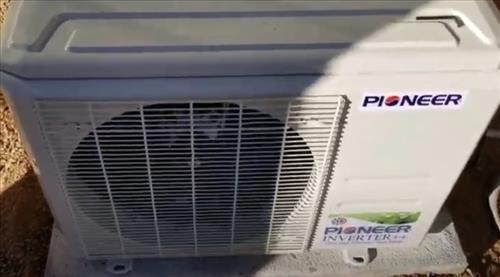
I recently installed one and was surprised how much higher the Seer rating was compared to another unit I installed two years ago.
The older units had a 17-19 Seer rating, which, while good, the new 22 Seer units are much better.
Pioneer is known for their DIY kits and, for the money, good units to install.
I have installed several of these units over the years, and all are still working very well.
The WYS Series unit I installed was on a home that has a 16 Seer heat pump on the roof and was installed to help lower the monthly operating cost.
This unit was installed on this home to help lower the monthly cooling bills.
Here is a video I made installing a 12000 BTU Pioneer WYS Series unit.
Gree is a Chinese company that sells mini split units all around the world.
This unit is a 9,000 BTU system with a very high 38 SEER rating.
While the SEER rating is very high, be sure to read reviews as there are mixed results for how well they operate.
Fujitsu makes several types of units from 16 to 33 SEER rating.
A 33 SEER rating is very good and one of the current best ratings available.
Daikin makes many good HVAC systems, including well-built mini split units with Seer ratings from 19-25.
The LV Series 12,000 BTU package has a SEER rating of 24.5, which makes it a very efficient unit.
12,000 BTU is rated to heat or cool a space roughly 450 to 550 Sq Ft.
Daikin mini split units work very well heating and cooling while saving energy.
Energy Efficient Mini Split Comparison Table
| Name | BTU's | SEER Rating |
|---|---|---|
| Cooper Hunter Hyper Heat | 9,000-12,000 | 25 SEER |
| Mitsubishi Hyper Heat | 9,000-12,000 | 24 SEER |
| Pioneer WYS Series | 9,000-24,000 | 21-22 SEER |
| Gree | 9,000 | 38 SEER |
| Fujitsu | 9,000 | 33 SEER |
| Daikin | 12,000 | 24.5 SEER |
Summary
Installing a mini split is a good way to heat and cool a space, along with saving energy.
Besides being better for the environment, this can also bring down electrical bills.
Another factor to consider when buying a unit is the build quality and warranty a package comes with.
Preferences can vary from person to person how good a brand is.
Installation can also be a big factor since many of the high SEER units do not come in a DIY kit.
While they can be installed by a knowledgeable homeowner an HVAC company will likely be needed.
Hiring an HVAC company for installation can run up costs making DIY kits very popular.
Most DIY kits have SEER ratings around 17-19 SEER which is still a very good rating compared to a traditional home HVAC system.
Traditional systems have a 12-16 SEER rating, with 14-16 SEER the most common.
Have you found a very good mini split brand with a high SEER rating? Let us know in the comments below.
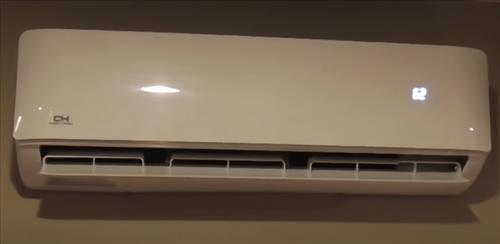
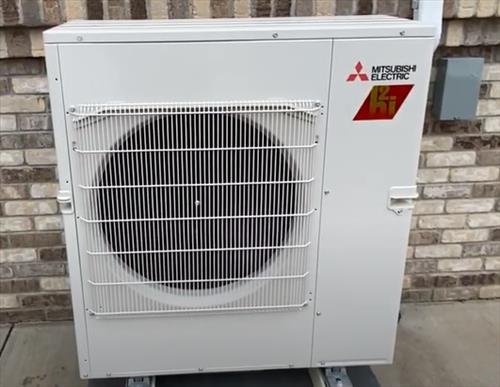
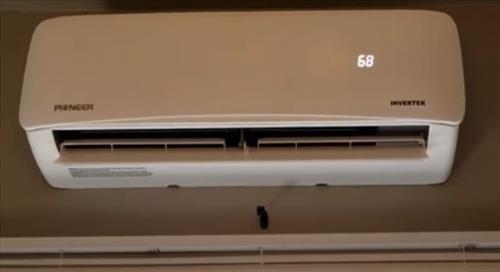
I am amazed how many new players have arrived onto the mini-split market. Bosch and GE are new players. Bosch boosts of ultra quiet and high efficient for a DIY mini-split. I enjoyed your article. Thanks!